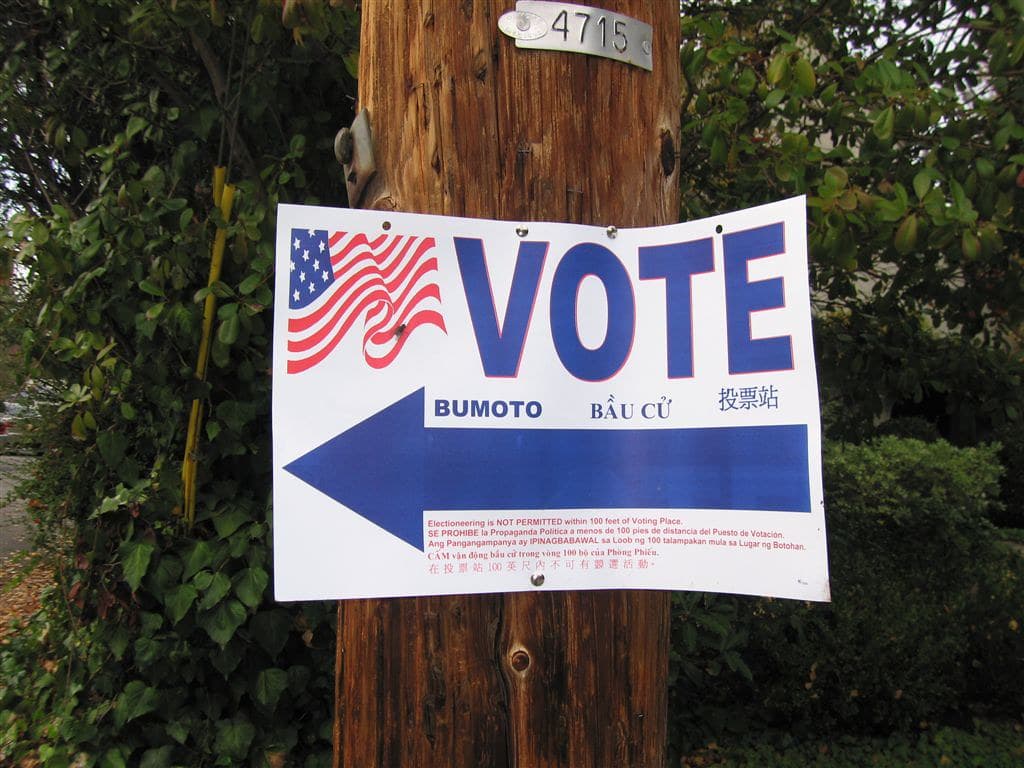In terms of democracy, the COVID-19 pandemic has struck the US at an awkward time. Millions of Americans have been expecting to head to the polls this year to vote for the offices of the presidency, both chambers of Congress and numerous governorships, and on many other local positions and issues. But the virus has made in-person voting a public health hazard for voters and poll workers alike. In response, lawmakers and experts are proposing changes to let people vote more safely.
Massachusetts Senator Elizabeth Warren (D) released a plan April 7 calling for $4 billion in federal funding for elections safety and voter protections. “We must keep voters healthy by making the process of casting a ballot easier and more accessible, including by giving everyone the option to vote by mail and enhancing the safety of in-person voting,” she wrote.
She proposed sending every registered voter an absentee ballot with pre-paid postage. States would also waive requirements like submitting copies of IDs, or witness or notary signatures, with ballots.
But for many, this isn’t enough. “Many voters—including voters of color, those in low-income communities, and people with disabilities—may face greater obstacles to participating in elections from home,” Warren wrote. “Some voters lack access to mail service or reliable broadband, or require language or other assistance to complete their ballot.”
Besides expanding vote-by-mail, Warren also proposed making in-person voting easier by allowing at least 30 days of early voting at polling sites. States would also extend voting hours, under her plan, and allow voters to vote at any polling site in their district.
Wisconsin, which held a statewide election on April 7, the day Warren’s plan was released, offers an ominous example of the risks if states don’t protect voters. Here’s what happened.
Due to concerns about COVID-19, a surge of voters demanded absentee ballots. Governor Tony Evers (D) had instituted a statewide stay-at-home order in late March, further discouraging people from wanting to vote in person.
In this context, thousands of poll workers refused to come to work at their precincts. This forced massive polling site closures. The state’s largest city, Milwaukee, closed all but five of its 182 sites; Green Bay closed all but two of its 31 sites.
Elections officials were overwhelmed by the flood of absentee ballot requests—over one million were requested, quadruple the number in the 2016 election. This meant that tens of thousands of voters wouldn’t receive a ballot until after election day. State law requires that ballots be postmarked by election day to count.
On April 2, a federal court had ordered the state to extend this deadline and count all absentee ballots returned by April 13. Governor Evers also asked the Republican-controlled state legislature to postpone the election, but it refused to do so. Evers then issued a last-minute executive order on April 6, the day before the election, to postpone in-person voting.
But that same day, the state Supreme Court overruled Evers, ordering that the election proceed. Then the US Supreme Court also ruled 5-4 against Evers’ executive order—and also blocked the previous lower court ruling to extend absentee voting.
The result is that tens of thousands of people will have their votes thrown out.
“The question here is whether tens of thousands of Wisconsin citizens can vote safely in the midst of a pandemic,” wrote Supreme Court Justice Ruth Bader Ginsberg in dissent. “With the [ruling] in place, that will not be possible. Either they will have to brave the polls, endangering their own and others’ safety. Or they will lose their right to vote, through no fault of their own.”
While vote-by-mail is a smart public health policy, it isn’t without issues. “While absentee ballots can help keep people safe and expand voting access, they come with a drawback: a greater chance of litigation,” wrote Edward Foley in a Politico op-ed. “Simply put, there are more things that can go wrong with vote-by-mail compared with in-precinct voting.”
Foley described some of the common errors that happen when people don’t vote in person. Besides the postal issues Wisconsin experienced, voters may forget to include required identifying information when filling out their ballots. They may postmark their envelopes improperly. Or an elections official may misread the writing on a ballot.
In the 2018 election, over 8 percent of absentee ballots nationally were not counted for various reasons. In the 2016 election, states like Georgia and New York had high disqualification rates for absentee ballots: 6.4 percent and 9.3 percent, respectively. These discrepancies are very likely to lead to lawsuits and contested elections.
“It is not enough that state law has rules for casting ballots,” Foley wrote. “There needs to be clarity on whether ballots can still count if something has gone wrong in the process of casting of them, especially if the problem is not the voter’s fault. State legislatures have tended to leave these vote-counting matters for their courts to decide in the heat of the moment, and states have learned the hard way what happens when the counting rules are ambiguous.”
Image from Hjl via Flickr/Creative Commons 2.0.





Show Comments